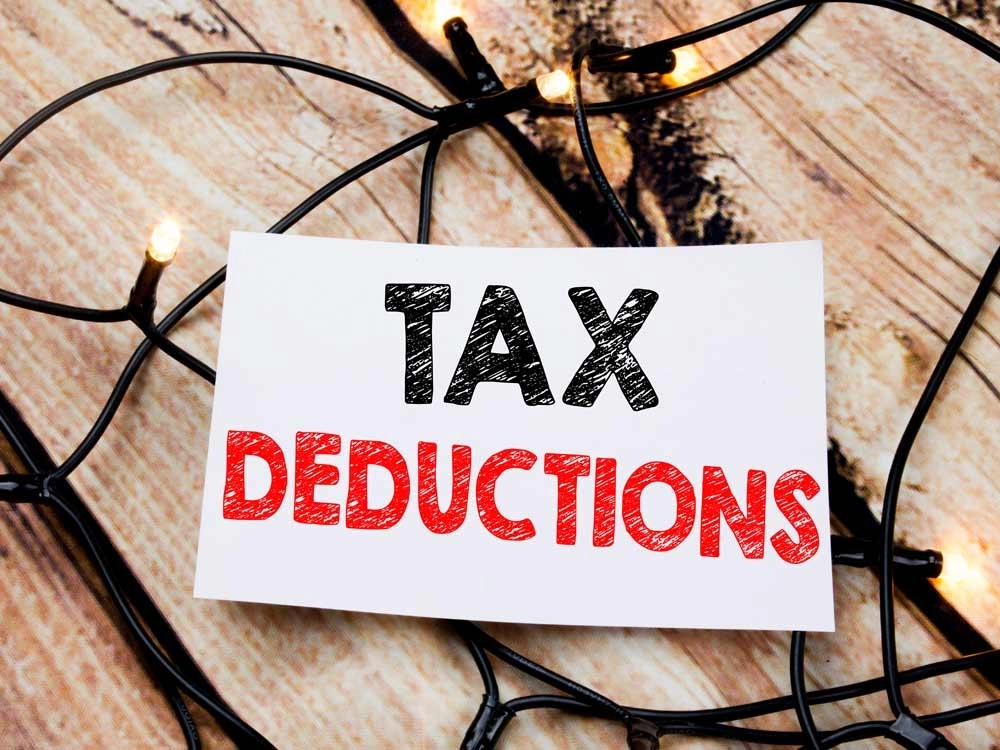Now Reading: UAE Real Estate: 6 Proven Tax Deductions Developers Often Miss in 2025
-
01
UAE Real Estate: 6 Proven Tax Deductions Developers Often Miss in 2025
UAE Real Estate: 6 Proven Tax Deductions Developers Often Miss in 2025

Table of Contents
Tax Deductions Developers : The UAE’s real estate market, valued at AED 958 billion in 2024 with 23.9% year-on-year growth, offers developers 6–9% yields in prime areas like Dubai Marina and Downtown Dubai, per gtlaw.com. The 9% corporate tax (CT) introduced in June 2023 under Federal Decree-Law No. 47, alongside 5% VAT and emirate-specific fees, impacts profitability, with non-compliance fines up to AED 500,000, per jaxaauditors.com.
Many developers overlook deductible expenses that can significantly reduce CT liability. This article outlines six proven tax deductions UAE developers often miss in 2025, with U.S. investor considerations, using web insights.
UAE Tax Framework for Developers

Developers face the following tax considerations, per czta.ae:
- Corporate Tax: 9% on profits above AED 375,000 (~$102,000); 0% for Qualifying Free Zone Persons (QFZPs) or small businesses with revenue below AED 3 million until December 31, 2026, per taxsummaries.pwc.com.
- VAT: 5% on commercial transactions (e.g., sales, short-term rentals); residential sales/long-term leases are zero-rated or exempt, per shuraatax.com.
- Transfer Fees: 4% in Dubai (split 2% buyer/seller); 2% in Abu Dhabi, per providentestate.com.
- Deductions: Expenses related to construction, marketing, and operations are deductible from taxable income, per proactfs.com.
- Compliance: Federal Tax Authority (FTA) registration, seven-year record retention, and EmaraTax filings are mandatory, per hawksford.com.
6 Proven Tax Deductions Developers Often Miss in 2025
1. Pre-Construction Consultancy Fees
Fees for feasibility studies, architectural designs, and environmental assessments are fully deductible, yet often overlooked, per farahatco.com. These costs, incurred before construction, reduce taxable income.
- Deduction Impact: A AED 1 million (~$272,000) consultancy spend on a AED 50 million project saves AED 90,000 CT (9%), boosting yield by 0.2%.
- U.S. Consideration: Deduct as business expense on Schedule E; report on Form 1120-F, per irs.gov.
- Action: Retain consultancy invoices; document project relevance; file with FTA, per finanshels.com.
2. Marketing and Sales Promotion Costs
Expenses for marketing campaigns, showrooms, and digital advertising (e.g., virtual tours) are deductible, per proactfs.com. Developers often miss these, especially for off-plan sales.
- Deduction Impact: A AED 800,000 (~$218,000) marketing budget on a AED 40 million project saves AED 72,000 CT, preserving 8% yield.
- U.S. Consideration: Deduct as advertising expense on Schedule E; align with IRS rules, per irs.gov.
- Action: Track campaign costs; retain contracts; submit deductions via EmaraTax, per emirabiz.com.
3. Infrastructure Contribution Costs

Payments to municipalities for infrastructure (e.g., roads, utilities) tied to development projects are deductible, per czta.ae. These are often misclassified as non-deductible capital expenses.
- Deduction Impact: A AED 1.5 million (~$408,000) infrastructure contribution on a AED 60 million project saves AED 135,000 CT, boosting yield by 0.2%.
- U.S. Consideration: Amortize as development cost under IRS Section 263A; report on Form 1120-F, per irs.gov.
- Action: Document payments to DLD/DEWA; verify deductibility; file with FTA, per hawksford.com.
4. Employee Training for Project Management
Costs for training staff on project management, sustainability, or PropTech tools are deductible, per ae.insightss.co. Developers often overlook these as operational expenses.
- Deduction Impact: A AED 400,000 (~$109,000) training program on a AED 30 million project saves AED 36,000 CT, maintaining 8% yield.
- U.S. Consideration: Deduct as business expense on Schedule E; align with IRS rules, per irs.gov.
- Action: Retain training records; certify relevance; submit to FTA, per farahatco.com.
5. Legal and Compliance Fees
Legal fees for contract drafting, regulatory approvals, and tax compliance (e.g., FTA audits) are deductible, per skylineholding.com. These are often missed due to misclassification as non-business expenses.
- Deduction Impact: A AED 500,000 (~$136,000) legal spend on a AED 50 million project saves AED 45,000 CT, enhancing yield by 0.1%.
- U.S. Consideration: Deduct as professional fees on Schedule E; report on Form 1120-F, per irs.gov.
- Action: Document legal invoices; verify project linkage; file with FTA, per finanshels.com.
6. Interest on Construction Loans
Interest on loans for construction or land acquisition is deductible, provided it relates to taxable income activities, per taxsummaries.pwc.com. Developers often fail to claim this due to complex loan structures.
- Deduction Impact: A AED 2 million (~$544,000) interest payment on a AED 100 million project saves AED 180,000 CT, boosting yield by 0.2%.
- U.S. Consideration: Deduct interest on Schedule E; align with IRS Section 163, per irs.gov.
- Action: Retain loan agreements; allocate interest to projects; file with FTA, per hawksford.com.
Quantitative Impact on Returns
Consider a AED 50 million development project yielding 8% (AED 4 million annually):
- Consultancy Fees: AED 90,000 CT savings boosts yield to 8.2%.
- Infrastructure Costs: AED 135,000 CT savings increases yield to 8.3%.
- Interest Deduction: AED 180,000 CT savings raises yield to 8.4%.
- Non-Deducted Case: 9% CT (AED 360,000), 5% VAT (AED 200,000), and AED 50,000 fines reduce yield to 7.2%.
Key Considerations for U.S. Investors
- Risks:
- Non-Compliance: Fines up to AED 500,000 for tax violations, per jaxaauditors.com.
- Oversupply: 76,000 units expected in 2025–2026 may soften yields by 0.5–1%, per colife.ae.
- Costs: Compliance costs AED 10,000–20,000; legal fees AED 5,000–15,000 annually, per hausandhaus.com.
- Tax Compliance: IRS requires Form 1040, Form 1120-F, Form 8938, and FinCEN Form 114, per irs.gov.
- Regulatory Compliance: DLD mandates digital filings; emirate-specific fees (e.g., Dubai’s 4% transfer fee) apply, per crcproperty.com.
- Currency Stability: AED pegged at 1 USD = 3.67 minimizes risk, per kaizenams.com.
Conclusion
In 2025, UAE developers can leverage six often-missed tax deductions—consultancy fees, marketing costs, infrastructure contributions, employee training, legal fees, and loan interest—to optimize 6–9% yields in a AED 958 billion market. U.S. investors, ensuring IRS and FTA compliance, can maximize returns by partnering with firms like Hawksford or Farahat & Co. for strategic tax planning. Tax Deductions
read more: UAE Property: 8 VAT Mistakes That Cost Investors Thousands





















